Marketing is all about understanding consumers’ behaviors, needs and motivations and then delivering an experience that aligns with all those points. It’s why I always stress honing in on your customers’ pain points when writing copy, and why marketers will test every different ad format under the sun to see what their audiences respond to.
This means that marketers who have a solid understanding of consumer behavior and psychology are typically going to be the most effective at creating strong, customer-centric campaigns. Neuromarketing takes this concept to a whole new level, as it allows you to create marketing materials that resonate with your audience from a cognitive place.
In this post, we’re going to go over everything you need to know about neuromarketing and how you can use it to evaluate and potentially influence your customers’ buying decisions.
Book My Free Marketing Consultation
What Is Neuromarketing?
To understand neuromarketing, let’s first take a look at what neuroscience is:
“Neuroscience, also known as Neural Science, is the study of how the nervous system develops, its structure and what it does. Neuroscientists focus on the brain and its impact on behavior and cognitive functions.”

With this in mind, we can better comprehend the neuromarketing definition:
“Neuromarketing is essentially designing marketing materials (including your website, ads, email campaigns and content) to evoke specific neurological reactions that trigger emotions or responses that are linked to purchasing.”
This diagram from Emotiv illustrates the concept of neuromarketing as it relates to prices:
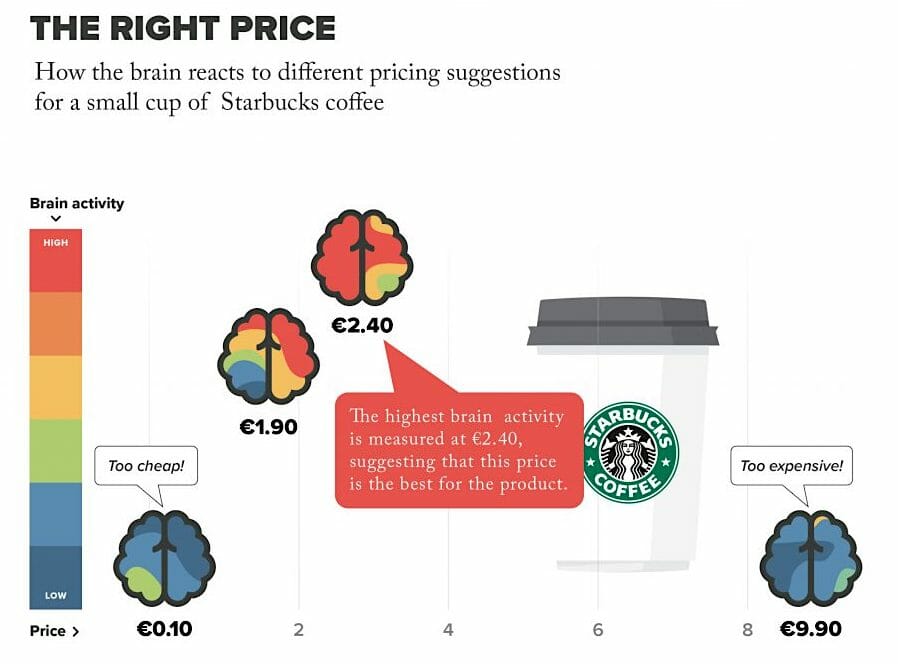
The idea is to understand how your customers’ brains are actually working (not how you assume they are working) and how they’re registering your marketing content. You can use this information to optimize your content accordingly and adjust your strategies, thereby improving the effectiveness of your marketing.
Although neuromarketing may sound incredibly advanced, it’s nothing new or unusual; the term was coined in 2002, although it’s only gained validity in more recent years. You may have heard it being called consumer neuroscience or decision science.
There are still some people who write off the field’s potential, but it’s worth noting that major corporations like Hyundai have used this technology when designing everything from their ad campaigns to the products and packaging themselves.
Related Content:
How Does Neuromarketing Work?
Neuromarketing isn’t just about basic strategy. You can actually invest in high-level research to see how real consumers are responding neurologically to your real campaigns.
In an early study from Temple University, scientists used eight methods to test this theory, including traditional surveys, eye tracking, heart rate, breathing, brain activity (with fMRI: functional Magnetic Resonance Imaging) and brain waves (with EEG: electroencephalography):
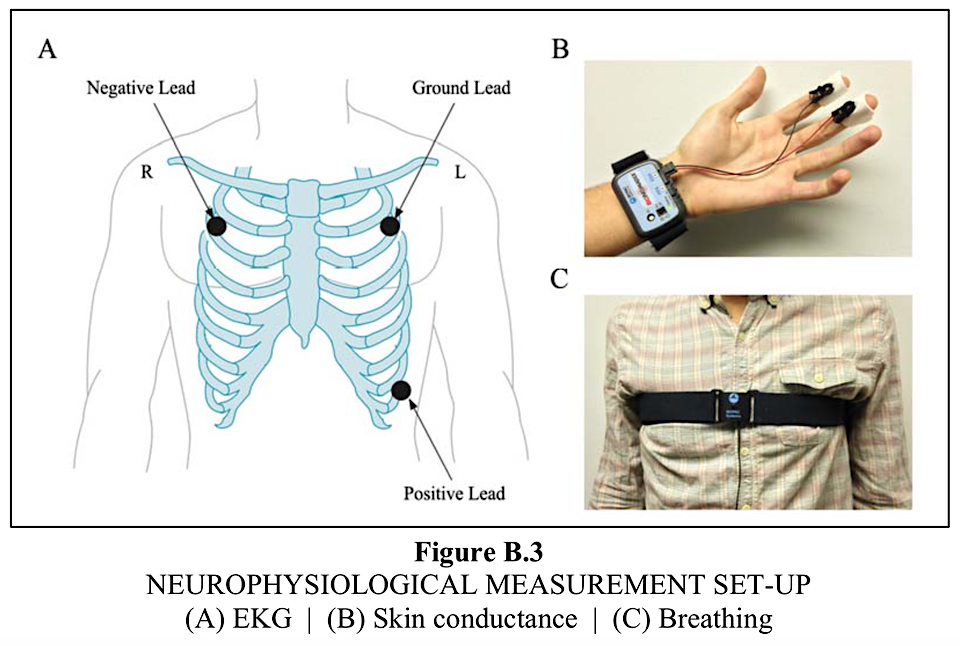
fMRIs monitor brain activity by assessing blood flow as the subjects respond to audio and visual cues. Researchers will watch to see if they’re eliciting the emotional responses they’re hoping for.
If they wanted to adopt out puppies, for example, they’d hopefully see the pleasure center of the brain light up, but if they want to create an ad that evokes fear so customers will buy their security system, they may want to look for a fear-based neurological response.
EEGs are much cheaper than MRIs and work by using a cap of electrodes that’s attached to the person’s scalp, evaluating the electrical waves that the brain produces. Researchers are able to track instinctual emotions like excitement, lust and anger based on the fluctuations in electrical waves. Keep in mind that, while effective, EEGs can’t give researchers a read on the deeper parts of the brain where the pleasure center is located.
In addition to fMRIs and EEGs, businesses may use the following techniques for neuromarketing research:
- Gaze mapping. With the use of glasses, screens, VR and even heatmapping, you can see where consumers are looking most often. You can use this for online marketing content, but you can even supply customers with portable glasses to track where their gaze is going as soon as they walk into your store. Are they actually looking at the signage or are they missing your high-value offers because they’re tucked just out of sight?
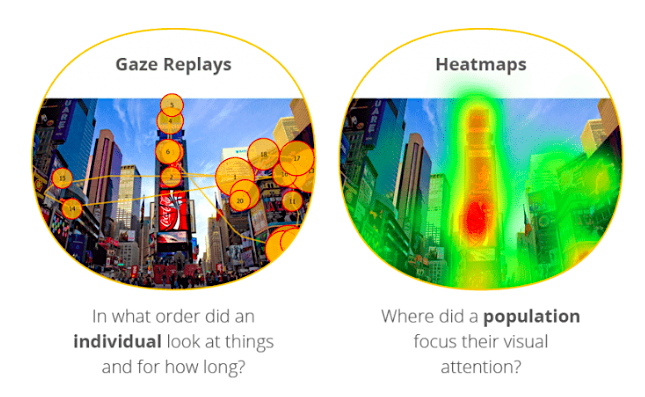
- Facial expressions. You can actually attach sensors to the face and measure tiny movements in the subject’s facial muscles. Even the subtle expressions of surprise, anger and joy can be detected, helping to assess the emotions you’re triggering.
- Biometrics. This method uses sensors to monitor changes in facial expressions, heart rate and other physiological responses to stimuli.
Neuromarketing Research vs General Neuromarketing Principles
If you don’t want to strap sensors to your own customers and stick them in MRI machines, using established, general neuromarketing principles is still a viable solution.
Many businesses using neuromarketing won’t run tests themselves to see how their ads are performing, but instead will use marketing methods that are backed by psychological research. Plenty of designers, for example, will consider color psychology when choosing their color palettes:
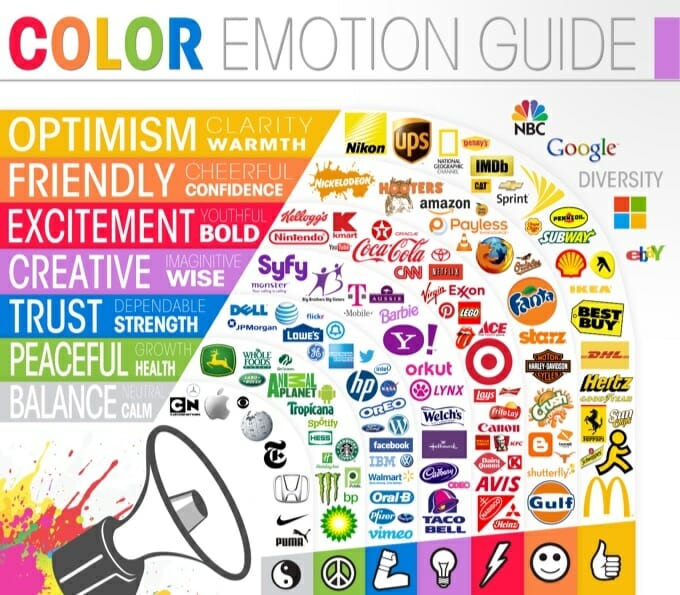
There are small changes that we know can make an impact on perception and consumer behavior, such as:
- People tend to choose healthy food options when displayed on the left side of the menu.
- Large, open spaces in luxury stores are associated with high social status.
- Removing dollar signs from price listings can actually boost sales.
It’s not just about visual changes, either. In marketing, you can also use sensory cues like touch, sound and smell to influence buying decisions. It’s part of the reason why Disney pumps their resorts full of gingerbread scents around Christmas, knowing that it will make people feel more at home.
Fun fact: Did you know that consumers will actually pay more attention to light-colored objects when they hear high-pitched sounds, whereas they’ll pay more attention to dark-colored objects when they hear low-pitched sounds?
Book My Free Marketing Consultation
How Is Neuromarketing Useful in Marketing Research?
Neuromarketing can be exceptionally useful when it comes to marketing research. If it weren’t, we wouldn’t have big brands like Google, HP, Microsoft, Frito-Lay, Hyundai, CBS and ESPN investing in it so much.
The ability to measure physiological consumer responses to everything from a product’s packaging to the ad with which you are promoting it is valuable, especially when you follow up with an in-depth interview about why the consumer felt the way they did. This can give you incredible insight into how effective your current campaigns are and what you can do to improve them.
Is Neuromarketing a More Accurate Way to Research?
Neuromarketing can clearly provide valuable insights into how the consumer is feeling and thinking, which can help you shape your campaigns.
One company, NeuroFocus (a neuromarketing company that was acquired by Nielsen in 2011), rose to fame by conducting neurological tests for consumer research with a product called Mynd, “the world’s first portable, wireless electroencephalogram (EEG) scanner. The skullcap-size device sports dozens of sensors that rest on a subject’s head like a crown of thorns. It covers the entire area of the brain…so it can comprehensively capture synaptic waves.”

After collecting data from consumers who wore the Mynd while watching TV ads or shopping for products, the company analyzed the subconscious responses to see which products were the most appealing, which movie characters fostered the strongest emotional attachments, and exactly when someone switched away from an advertisement.
Unfortunately, while it can be useful, neuromarketing also has its limitations in some instances. Because it focuses completely on unconscious decision making, it can be difficult to verify exactly why customers feel the way they do or what specific changes you could make to influence those feelings. You’re going on customers’ gut instincts, not conscious decisions.
There are plenty of other research methods that offer more insight into traditional decision making, including:
- Social listening. This is where you see what people are saying about your brand online (tools like Mention can help with this).
- Conducting surveys. Create a survey with customized questions that can be filled out in person, by phone, via email or online (tools like Qriously can help with this).
- Market research. This could include in-depth case studies and interviews with consumers and/or focus groups (tools like Questback can help with this).
- A/B testing. Also known as split testing, this is when you test two versions of something, like product packaging or an ad campaign (tools like Optimizely can help with this).
That being said, getting insight into unconscious decision making can be extremely useful. It’s estimated that the human brain processes about 95% of the information we take in unconsciously, particularly problem solving and decision making.
It’s safe to say that neuromarketing is most effective when you’re using biological/neurological data with at least one research method that looks into traditional decision making. Click To Tweet
Related Content:
Neuromarketing Examples
Let’s take a look at a few examples of companies that are taking advantage of neuromarketing and and neuroscience.
- PayPal used neuromarketing company NeueroFocus to help refine their forgettable brand message (essentially: “Safe, simple, wow!”). They tested different key phrases to use in marketing for the different features, and when they improved PayPal’s “visual and verbal identity” based off of neuromarketing data, their click-through and response rates increased 3-4X.
- Hyundai hooked members of their target audience up to a UGC, asked them to look at different parts of one of their cars and captured their brain activity while they did so. The study focused on the “primal” parts of the brain that triggered subconscious emotions and the results led to the company improving the car’s exterior.
- IKEA used neuroscience to ask “radical, disruptive questions about IKEA’s business” such as what new sources of energy, textiles and plastics could they use. They used high-resolution EEG headsets and eye trackers on IKEA customers in Poland and the Netherlands to gauge “reactions to new business models.” Today, IKEA has a new business model and undertakings such as a “home solar offering that enables customers to generate their own renewable energy [and] a shift to renewable plastics.”
- Intel wanted to understand how consumers felt about their brand in a more thorough way than conducting old-school market research. They hired NeuroFocus to discover the specific words that people associated with Intel and whether these associations were affected by a person’s culture. After analyzing the EEG results of their volunteers in both the U.S. and China in which 64 sensors were attached to their heads to measure their brain’s electrical activity, they learned new information that they “would have never learned through traditional market research and focus groups, where cultural biases come into play.”
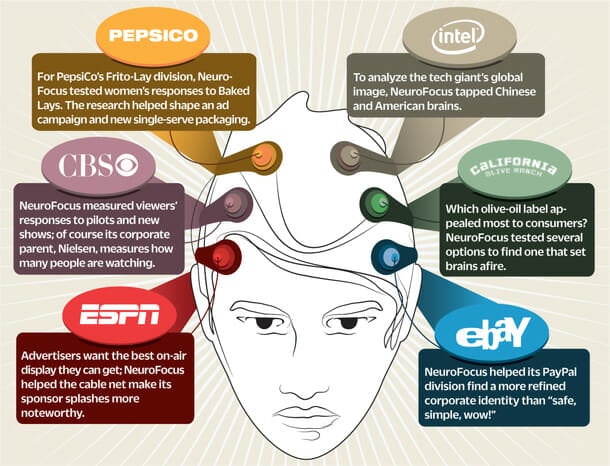
How to Use Neuromarketing in Your Campaigns
Ready for some neuromarketing 101?
Whether you’re investing in biometric research with your consumers or want to stick to tried-and-true neuromarketing strategies, these six cognitive and emotional techniques can help you improve the effectiveness of your marketing campaigns.
Trigger Emotional Responses
Easier said than done, I know, but this is a solid strategy that’s really at the base of neuromarketing.
Psychology has shown us that consumers unconsciously gravitate more towards avoiding pain than we do towards gaining something positive. This all comes down to the loss aversion phenomenon, where we fear losing something more than we value getting something.
Therefore, appealing to pain points that can trigger an emotional response tied to loss avoidance can be a strong marketing strategy. It’s why SaaS campaigns that stress how much time you’re losing by not using their tool can be so insanely effective: think about all that lost time, lost productivity and lost revenue!
Dive Deeper:
Draw Attention Where You Want It
We are neurologically wired to respond to certain visual cues, and knowing these tricks can help you direct the viewer’s gaze right where you want it, putting a big emphasis on the product or service that you want to sell. For example, using contrasting colors to draw the eye straight to a CTA button is a common tactic.
Another example goes right back to middle school, where one kid looks up at the ceiling to see how many people around him he can get to look up, too. An Australian usability specialist actually found that when consumers are viewing an ad that features a person looking at something, their eyes automatically go to what the subject in the ad is looking at.
In this image, heatmaps show that viewers mostly look at the cute baby:
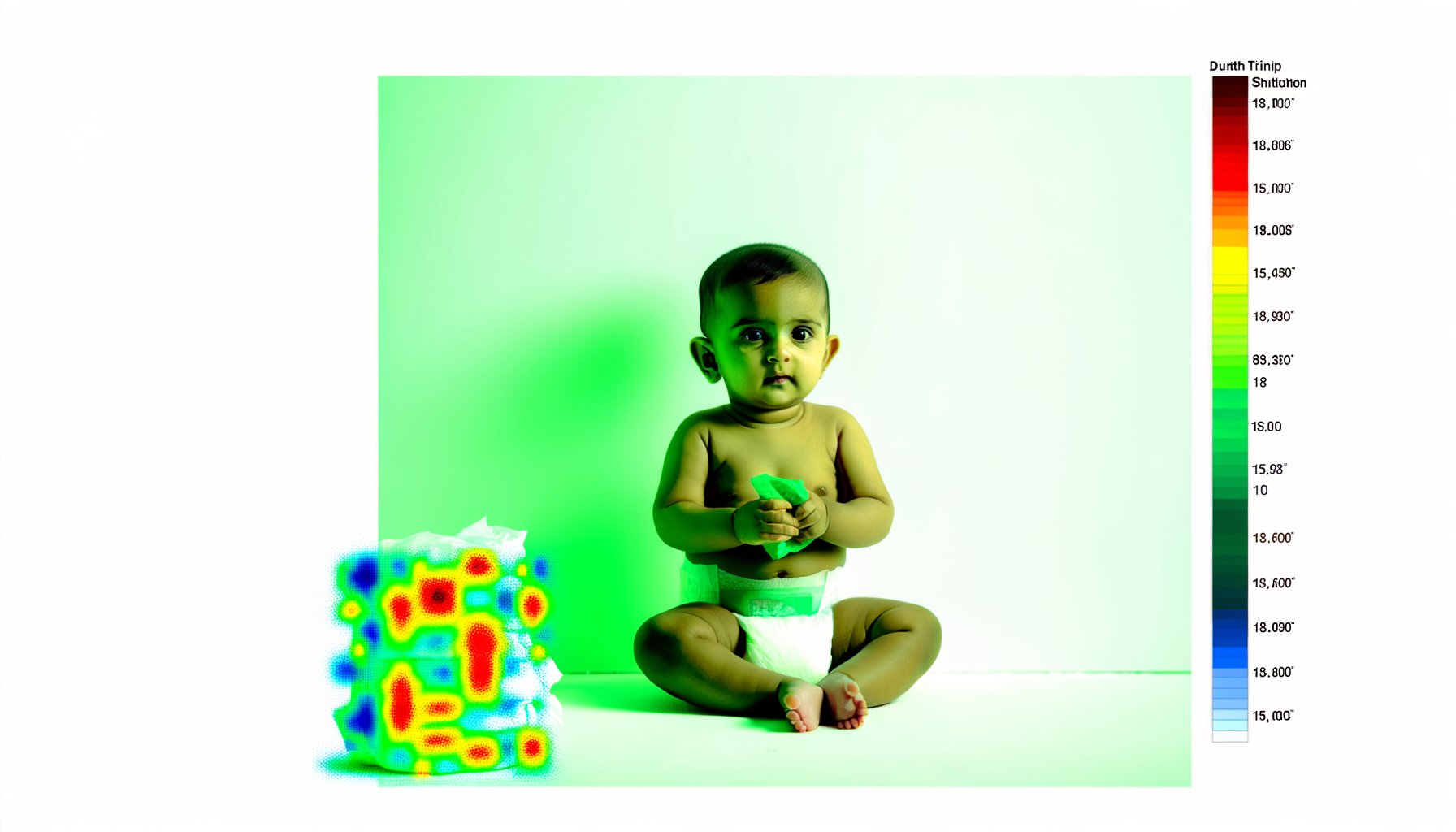
But in this example of the baby looking at the ad copy, viewers looked at the ad copy, too:
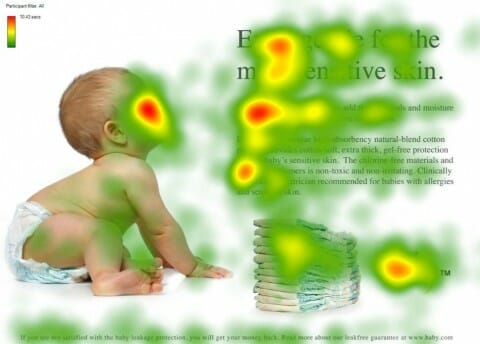
Dive Deeper: How to Create CTAs that Actually Cause Action
Leverage Information “Anchoring”
“Anchoring” is a neuromarketing technique in which “the brain often sees the first number and uses it as a price anchor. When different prices appear, the brain makes a rough comparison that is influenced by the anchor.”
Let’s say you find a pair of sweatpants that you love, but cringe when you see the price tag of $80. Even with great reviews, you can’t help but wonder how this simple item could be worth it. But then later you see that the store has dropped the price to $60. Compared to the first (the “anchor”) price, $60 seems reasonable.
Now let’s imagine that you see the same sweatpants for the first time at $60. $60?! That’s so expensive for sweatpants! They only seemed cheaper in the scenario above because you’ve already had a higher anchor, making the new price seem like a deal.
Here’s another great example in which people were asked to guess how old Gandhi was when he died:
“Before asking that, though, they asked two groups different questions. They asked one group if he died before age 9, and another group if he died after the age of 140. The obvious answer to both was no. Then, the groups estimated his actual age of death (87). The first group’s average estimate was 50. The second group’s guess averaged 67. An anchoring bias created by the numbers in the first question influenced the estimates.”
Be intentional about suggesting price or quality anchors to clients or customers instead of allowing them to stumble upon a price point on their own. Reach out to cold audiences with the higher price points, and then use remarketing to offer the lower deals.
Related Content: How Remarketing Can Help Increase Conversions
Make Design Work for You
As crazy as it may sound, we read a lot (usually unconsciously) into the visuals that we see in marketing campaigns.
Research found that people make judgments subconsciously within 90 seconds of of first seeing something or someone, and that 62-90% of that assessment is based on color alone.
Similarly, people tend to judge fonts as having different meanings. In the example below, would you hire a lawyer who used Comic Sans on her business card or the more serious font, Garamond?

Compare the business-oriented font of LinkedIn versus the more playful font of Twitter:


Learn More: How to Create CTAs that Actually Cause Action
Conclusion
Neuromarketing can help brands better understand their target audience’s buying behaviors on a neuroscientific – i.e. cognitive and emotional – level, which allows you to tweak your current strategies and campaigns to evoke stronger, more specific buying impulses.
Neuroscience is a powerful tool, but it is a tool and thus should be used to tweak your brand’s strategies. To get the best results, neuromarketing should used along with careful split testing, detailed analytics, and reaching out to customers directly.
